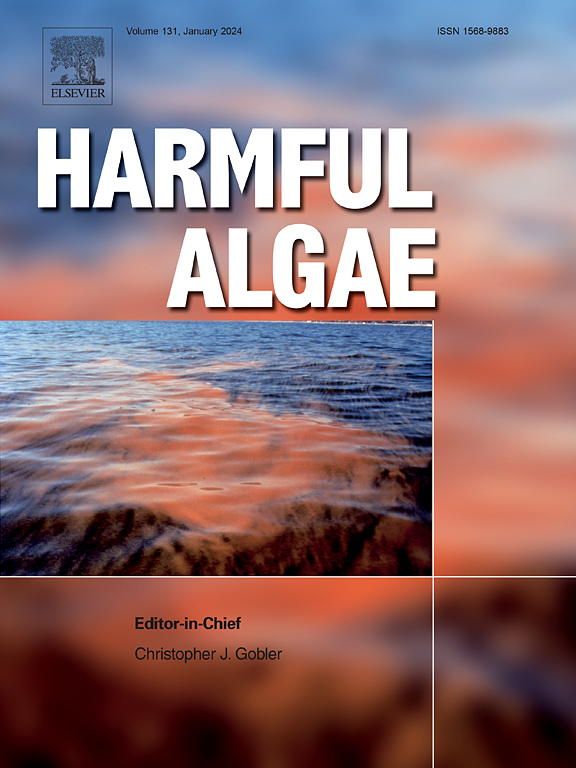Molecular techniques for understanding harmful algal blooms: A review
IF 4.5
1区 生物学
Q1 MARINE & FRESHWATER BIOLOGY
引用次数: 0
Abstract
Harmful algal blooms (HABs) are intricate ecological events caused by diverse algal species and are influenced by a myriad of biotic and abiotic factors. The urgently needed development of effective prevention and control techniques face two primary challenges. The first challenge is the technical shortfalls in rapidly identifying and monitoring the causative species. The second challenge is the absence of research frameworks and technologies for accurately diagnosing the primary drivers of these blooms. Molecular techniques offer promising solutions to these issues, and research in this field has seen significant growth over the past two decades. Previous reviews have predominantly focused on species identification and monitoring, leaving the status of bloom driver studies less clear. This review provides a comprehensive overview of molecular techniques for HAB identification and driver analysis. HAB-specific use cases of techniques and comparison between them based on technical specifications are provided. Nucleic acid-based techniques presently dominate over antibody-based techniques due to their tunable taxon-specificity and ease to prepare probes. In situ applications and monitoring platforms still have a large room for improvement. The omics approach is the most promising choice for unraveling HAB drivers but requires a framework and a quantitative model for estimating the contribution of potential responsible factors. Future prospects relating to particular needs in HAB research and emerging technologies are also discussed.
了解有害藻华的分子技术综述
有害藻华(HABs)是由多种藻类引起的复杂生态事件,受到无数生物和非生物因素的影响。迫切需要发展有效的预防和控制技术,面临两个主要挑战。第一个挑战是在快速识别和监测致病物种方面的技术缺陷。第二个挑战是缺乏准确诊断这些水华的主要驱动因素的研究框架和技术。分子技术为这些问题提供了有希望的解决方案,在过去的二十年里,这一领域的研究有了显著的增长。以前的综述主要集中在物种鉴定和监测上,使得对开花驱动因素的研究不太清楚。本文综述了分子技术在赤潮鉴定和驱动分析方面的研究进展。提供了特定于有害藻华的技术用例,并根据技术规范对它们进行了比较。基于核酸的技术由于其可调的分类特异性和易于制备探针,目前在基于抗体的技术中占主导地位。现场应用和监测平台仍有很大的改进空间。组学方法是揭示HAB驱动因素最有希望的选择,但需要一个框架和定量模型来估计潜在负责因素的贡献。还讨论了与有害藻华研究的特殊需要和新兴技术有关的未来前景。
本文章由计算机程序翻译,如有差异,请以英文原文为准。
求助全文
约1分钟内获得全文
求助全文
来源期刊

Harmful Algae
生物-海洋与淡水生物学
CiteScore
12.50
自引率
15.20%
发文量
122
审稿时长
7.5 months
期刊介绍:
This journal provides a forum to promote knowledge of harmful microalgae and macroalgae, including cyanobacteria, as well as monitoring, management and control of these organisms.
 求助内容:
求助内容: 应助结果提醒方式:
应助结果提醒方式:


